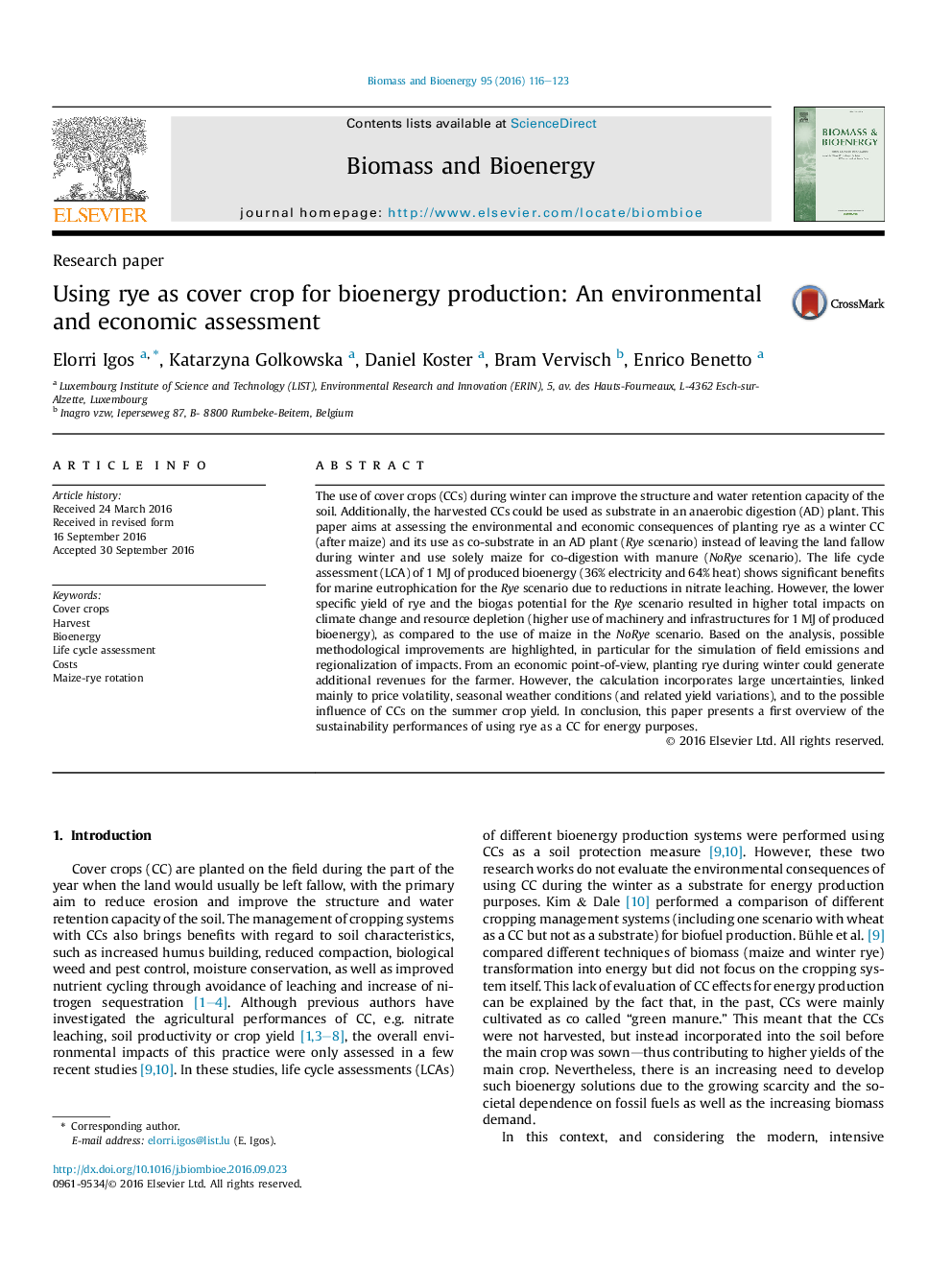| Article ID | Journal | Published Year | Pages | File Type |
|---|---|---|---|---|
| 4996362 | Biomass and Bioenergy | 2016 | 8 Pages |
Abstract
The use of cover crops (CCs) during winter can improve the structure and water retention capacity of the soil. Additionally, the harvested CCs could be used as substrate in an anaerobic digestion (AD) plant. This paper aims at assessing the environmental and economic consequences of planting rye as a winter CC (after maize) and its use as co-substrate in an AD plant (Rye scenario) instead of leaving the land fallow during winter and use solely maize for co-digestion with manure (NoRye scenario). The life cycle assessment (LCA) of 1Â MJ of produced bioenergy (36% electricity and 64% heat) shows significant benefits for marine eutrophication for the Rye scenario due to reductions in nitrate leaching. However, the lower specific yield of rye and the biogas potential for the Rye scenario resulted in higher total impacts on climate change and resource depletion (higher use of machinery and infrastructures for 1Â MJ of produced bioenergy), as compared to the use of maize in the NoRye scenario. Based on the analysis, possible methodological improvements are highlighted, in particular for the simulation of field emissions and regionalization of impacts. From an economic point-of-view, planting rye during winter could generate additional revenues for the farmer. However, the calculation incorporates large uncertainties, linked mainly to price volatility, seasonal weather conditions (and related yield variations), and to the possible influence of CCs on the summer crop yield. In conclusion, this paper presents a first overview of the sustainability performances of using rye as a CC for energy purposes.
Related Topics
Physical Sciences and Engineering
Chemical Engineering
Process Chemistry and Technology
Authors
Elorri Igos, Katarzyna Golkowska, Daniel Koster, Bram Vervisch, Enrico Benetto,
